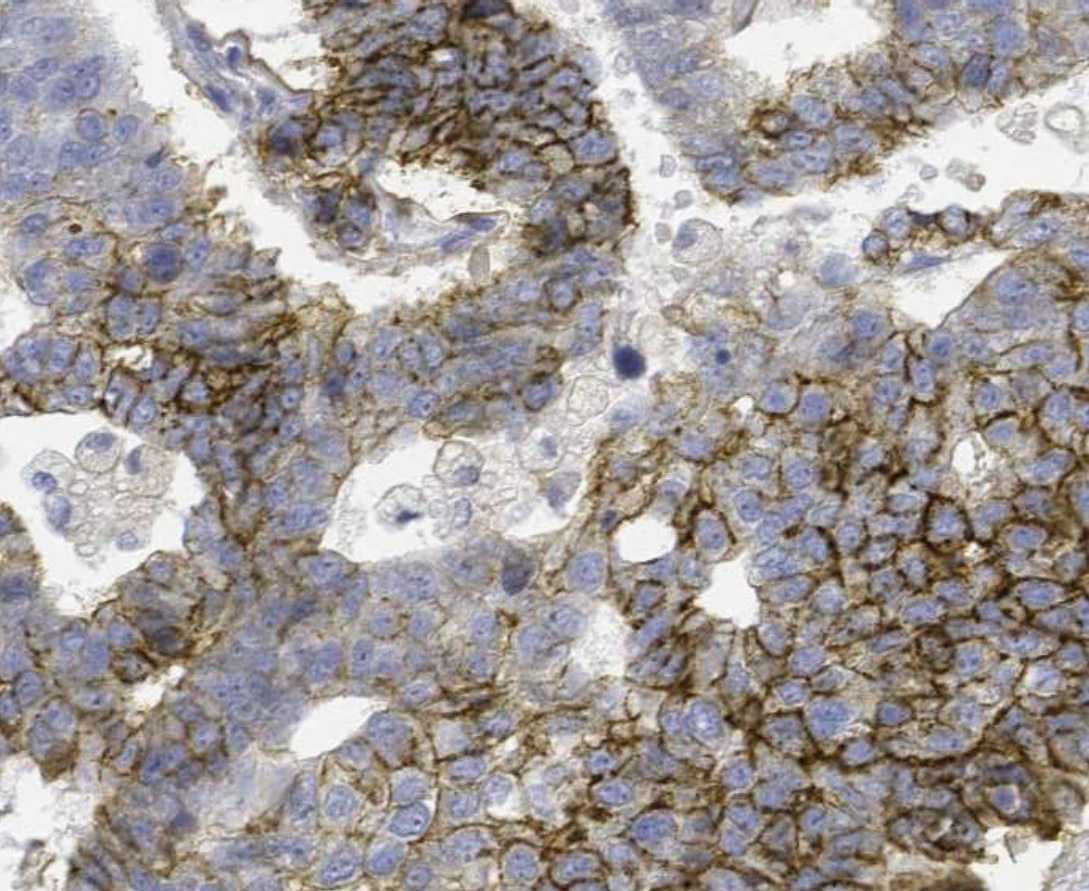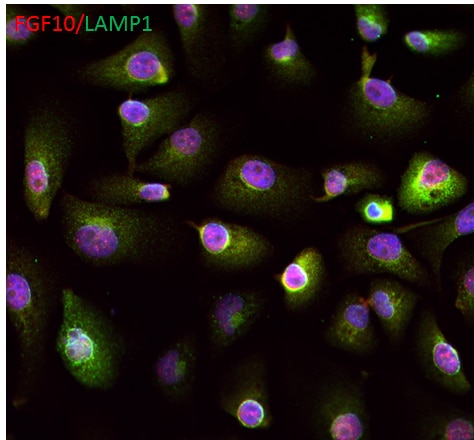Human FGF-10 Antibody Summary
Cys37-Ser208
Accession # O15520
Applications
This antibody functions as an ELISA detection antibody when paired with Mouse Anti-Human FGF‑10 Monoclonal Antibody (Catalog # MAB3451).
This product is intended for assay development on various assay platforms requiring antibody pairs.
Please Note: Optimal dilutions should be determined by each laboratory for each application. General Protocols are available in the Technical Information section on our website.
Reconstitution Calculator
Preparation and Storage
- 12 months from date of receipt, -20 to -70 °C as supplied.
- 1 month, 2 to 8 °C under sterile conditions after reconstitution.
- 6 months, -20 to -70 °C under sterile conditions after reconstitution.
Background: FGF-10
The FGFs are a growing family of heparin-binding growth factors that show a variety of biological activities toward cells of mesenchymal, neuronal and epithelial origin. All FGFs have two conserved cysteine residues and share significant amino acid sequence homology. FGF-10 was originally identified from rat embryos by homology-based polymerase chain reaction. Human and mouse FGF-10 were subsequently cloned. The human FGF-10 cDNA encodes a 208 amino acid residue protein with a hydrophobic amino-terminal signal peptide. Human FGF-10 shares approximately 92% and 95% amino acid sequence identity with mouse and rat
FGF‑10, respectively. Among the FGF family members, FGF-10 is most closely related to FGF-7. The expression of FGF-10 transcripts has been shown to be most abundant in the embryo and adult lung. Recombinant FGF-10 preparations have been shown to be mitogenic for epithelial and epidermal cells but not fibroblasts. Based on its in vitro biological activities and in vivo expression pattern, FGF-10 has been proposed to play unique roles in the brain, in lung development, wound healing and limb bud formation.
- Yamasaki, M. et al. (1996) J. Biol. Chem. 271:15918.
- Emoto, H. et al. (1997) J. Biol. Chem. 272:23191.
- Ohuchi, H. et al. (1997) Development 124:2235.
- Tagashira, S. et al. (1997) Gene 197:399.
- Bellusci, S. et al. (1997) Development 124:4867.
Product Datasheets
Citation for Human FGF-10 Antibody
R&D Systems personnel manually curate a database that contains references using R&D Systems products. The data collected includes not only links to publications in PubMed, but also provides information about sample types, species, and experimental conditions.
1 Citation: Showing 1 - 1
-
Anti-inflammatory activity of nanocrystalline silver-derived solutions in porcine contact dermatitis.
Authors: Nadworny PL, Wang J, Tredget EE
J Inflamm (Lond), 2010-02-19;7(0):13.
Species: Porcine
Sample Types: Whole Tissue
Applications: IHC-P
FAQs
No product specific FAQs exist for this product, however you may
View all Antibody FAQsReviews for Human FGF-10 Antibody
Average Rating: 4.5 (Based on 2 Reviews)
Have you used Human FGF-10 Antibody?
Submit a review and receive an Amazon gift card.
$25/€18/£15/$25CAN/¥75 Yuan/¥2500 Yen for a review with an image
$10/€7/£6/$10 CAD/¥70 Yuan/¥1110 Yen for a review without an image
Filter by:






